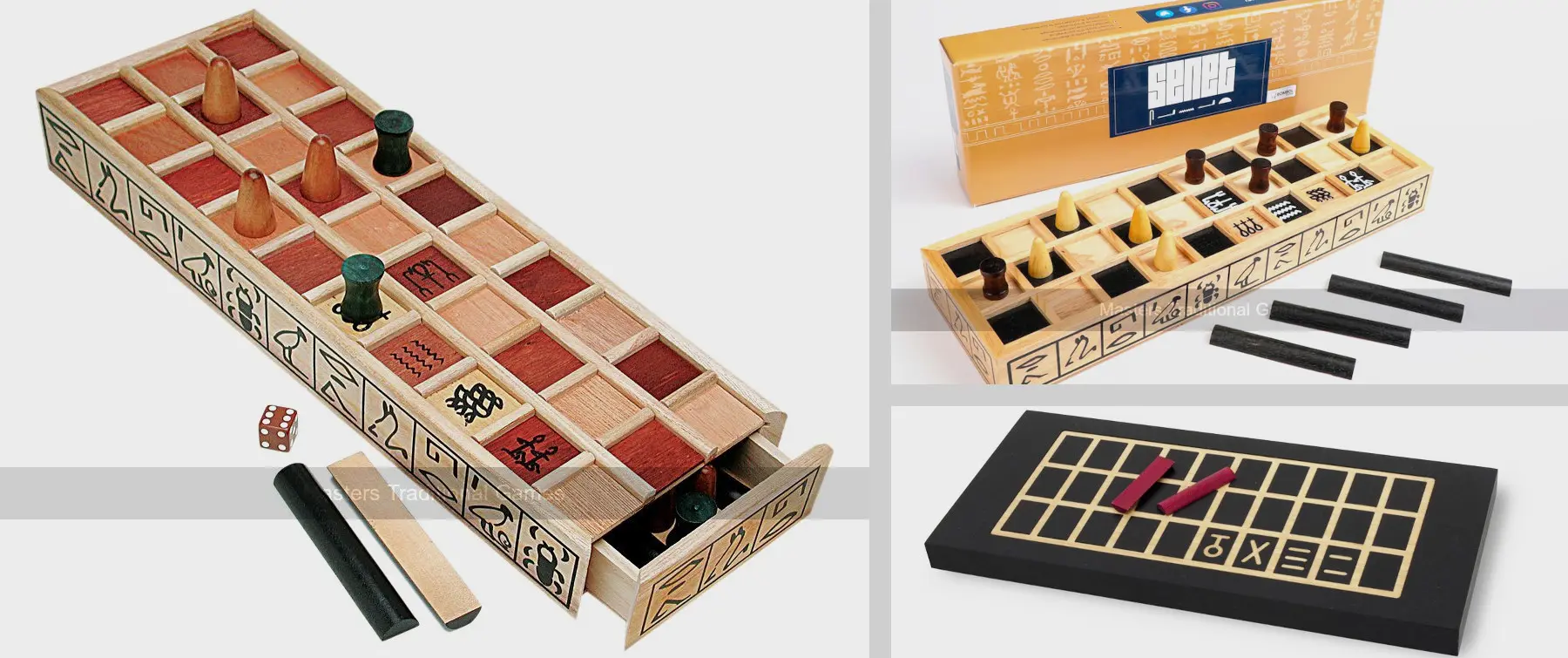Senet - The Ancient Egyptian Game
Senet is a two-player race game that originated in ancient Egypt over 4500 years ago! The game is still popular today, and combines elements of strategy and chance. Senet held significant religious symbolism in ancient Egyptian culture, representing the journey of the soul through the afterlife. Four sets for playing Senet were even found in the tomb of the famous Egyptian Pharaoh, King Tutankhamun!
- Goal: Score all your pieces before your opponent!
- Roll Dice: Players take turns rolling the throwing stick dice.
- Move: Select a piece to move by the number of tiles you rolled.
- Special Tiles: The special house tiles grant benefits and disadvantages!
You can read the rules with more detail below! The origins of these rules are discussed later in the page.
| Players | 2 |
| Game Length | 30 Minutes |
| Age | ~4500 years |
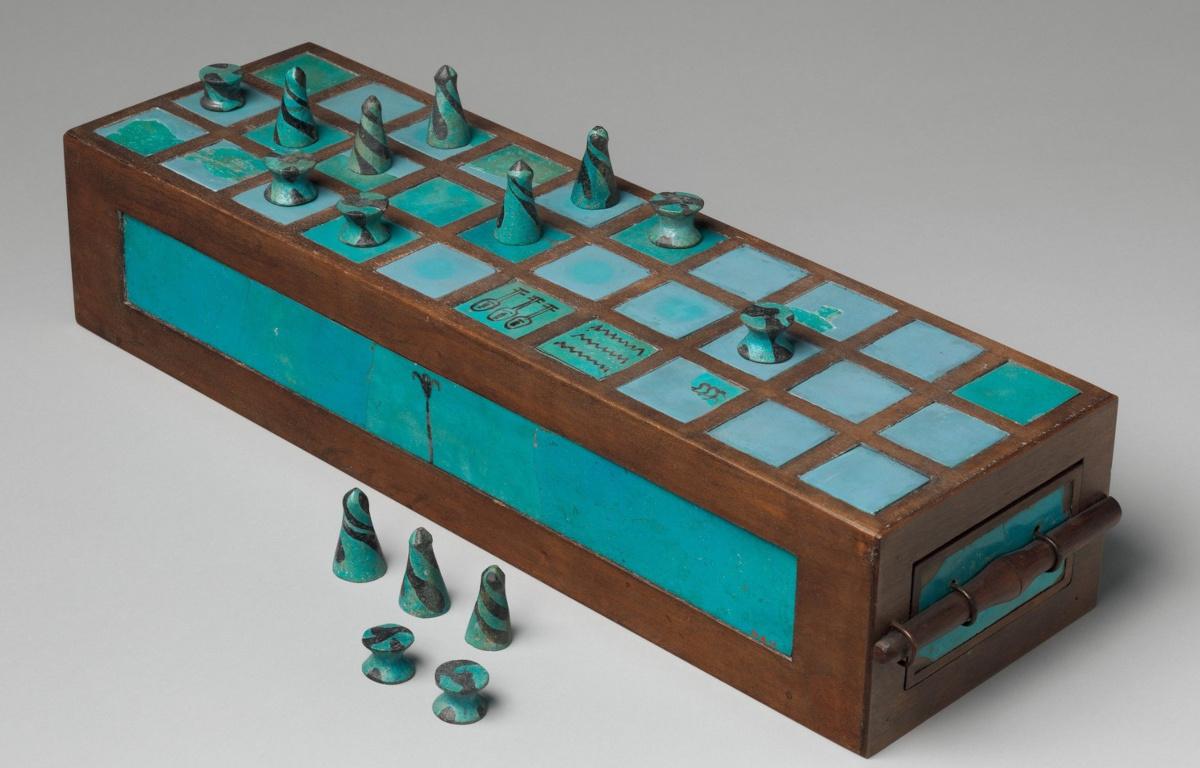
Table of Contents
Rules of Senet
In Senet you race to beat your opponent in scoring all of your pieces. Each player starts with a pre-defined arrangement of pieces on the board, and the movement of your pieces is determined by rolling throwsticks or knucklebones, which act like dice. Special tiles on the board also provide benefits or drawbacks whilst playing. The specific rules of the game are described below!
Equipment needed for Senet:
- A game board with 3 rows and 10 columns.
- 5 pieces for one player (cone-shaped pieces are commonly used).
- 5 pieces for the other player (spool-shaped pieces are commonly used).
- 4 throwing stick dice or a knucklebone. You can also substitute in 6-sided dice by ignoring rolls of 6, or you can use theRoyal Game of Ur tetrahedral dice.

Rule 1 - Board Setup
The game board consists of 30 squares arranged in three rows of ten. The starting pieces of each player should be positioned on alternating tiles on the first row of the board. The player with their piece on the top-left of the board goes first. You may roll the dice to decide the player that goes first!

Rule 2 - Roll the Dice
Senet uses the rolling of four throwsticks to decide how far you can move a piece. After rolling, you count the number of throwsticks with their marked sides facing up. This is the number of tiles you can move one of your pieces, except if you roll a zero! If you roll a zero, you can move one of your pieces 5 tiles. You can read more about throwing stick dice, or using knucklebones as dice, on our dice page.
| Throwsticks | Move |
| 0 facing up | move 5 tiles |
| 1 facing up | move 1 tile |
| 2 facing up | move 2 tiles |
| 3 facing up | move 3 tiles |
| 4 facing up | move 4 tiles |
Rule 3 - Move your Pieces
You can pick any piece to move, and you must move it by the exact number of tiles that you rolled. Pieces are moved along the first row to the right, the middle row to the left, and back to the final row to the right where pieces can finally be scored. You can jump your pieces over other pieces, as long as you are not jumping your piece over a blockade (described below). If you have no available moves, then your turn is skipped. There are also special rules related to blockades, capturing pieces, and the special tiles at the end of the board.

Moving Pieces
- Choose a piece to move along the path shown above.
- The destination tile for your piece cannot contain another of your pieces.
- If an opponent's piece is at the destination, then you may be able to capture it. The capturing rules are given below.
- You may not pass an opponent's blockade. A blockade occurs when you or your opponent have three pieces in a row. You cannot jump over an opponent's blockade. Youcan jump over your own blockade.
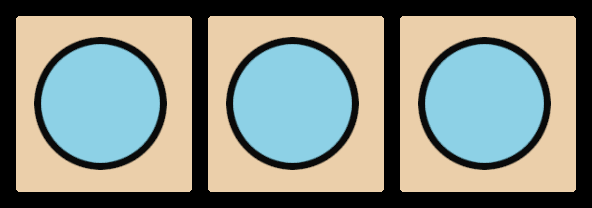
Capturing Pieces
- You can capture pieces by swapping the position of one of your pieces with one of your opponent's pieces.
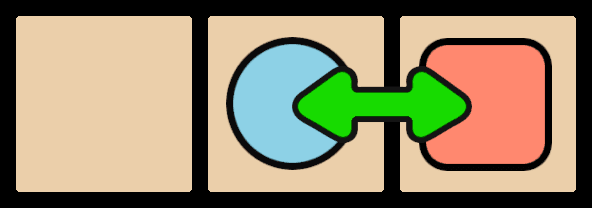
- You cannot capture protected pieces. Pieces are protected when they have a friendly piece directly before or after them.
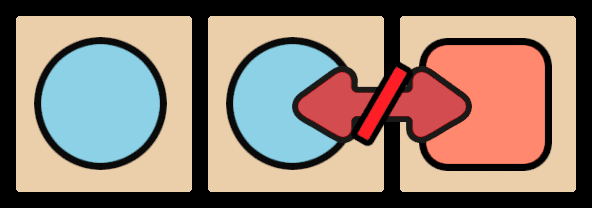
- All special tiles other than the final tile are safe from capture. The final tile, the House of Horus, is not safe!

Rule 4 - Special Tiles
Many of the complications in playing Senet come from the special rules associated with the final 5 tiles of the board. The effects of each of the final 5 tiles is given below.

Special Tiles
- The House of Happiness cannot be jumped over! You must visit this tile before progressing further on the board.
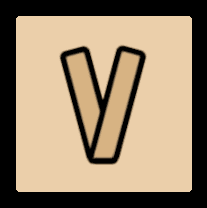
- The House of Water sends pieces back to the central Ankh tile (the House of Rebirth). If the central Ankh tile is not empty, then the piece should be moved back to the first empty tile before the Ankh tile.
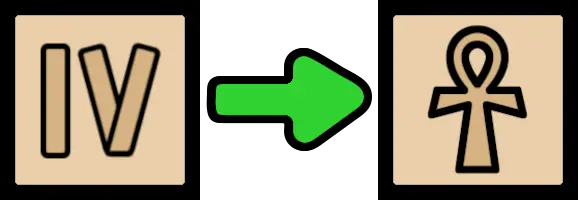
- The final three tiles of the board require exact rolls for pieces to leave the board. Pieces on these tiles cannot be moved to the other tiles, they can only be scored by moving them off the board! You need to roll exactly the number of tiles left to score these pieces (3, 2, and 1, respectively). These tiles are called the House of the Three Truths, the House of Re-Atoum, and the House of Horus, respectively.
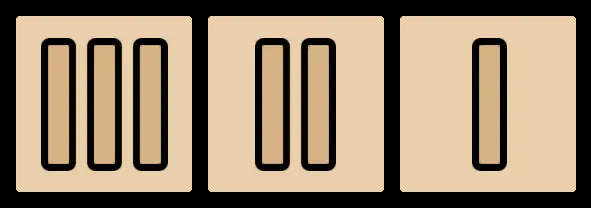
- The House of Horus allows scoring pieces without rolling, and is not safe. If you have no pieces left on the first row of the board at the start of your turn, your piece left on this tile will be scored automatically! Pieces on this tile may also be captured.
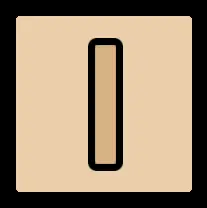
Play Senet!
Now that you know the rules, you can give a game of Senet a go! You can either make your own board and pieces using paper, play online, or purchase a board for your own collection! If you would be interested in our own online version of the game in a similar style to our version of the Royal Game of Ur, then please let us know!
Rule Origins
The rules that we describe here are just one set of many rules that have been proposed for playing Senet. Unfortunately, the exact rules that were played for Senet have been lost to history. Therefore, the game we play today is just a best guess based upon historical evidence. That means if you think there is a rule that you don't like, you can try changing it! If it is more fun, then who knows, maybe it was the way the game was played 4000 years ago!
You may also be interested in reading other resources on the game for more info about alternative rule-sets that people play, history about the game, or for DIY instructions:
- Make and Play Your Own Senet Game by the Oriental Institute at the University of Chicago.
- Rules of Ancient Egyptian Senet or Senat by Masters Traditional Games.
- Play Senet Online by Play Online Dice Games.
Related Game: The Royal Game of Ur
The Royal Game of Ur is a similar age to Senet, with slightly simpler gameplay. It was originally created in Ur, Mesopotamia, although it quickly spread to Egypt and was played under the name Aseb on a slightly altered board. Many Senet boards that have been found contain a board for playing Aseb on their flip side, suggesting that the game was also very popular in Egypt! If you'd like to try the Royal Game of Ur, you can learn more about the game and give it a go on our homepage!
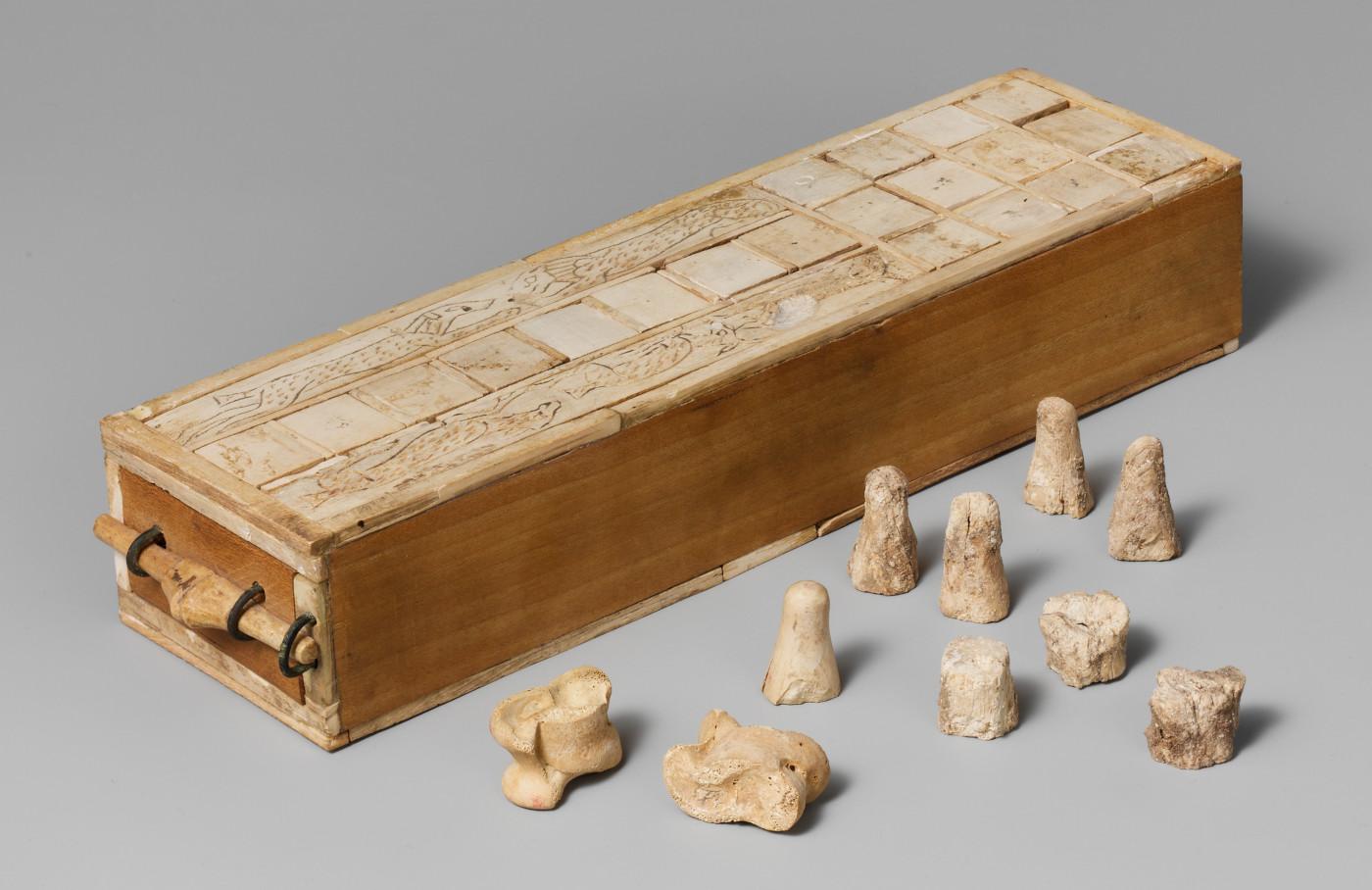
Buy Physical Boards
We are obviously big fans of playing board games online here at RoyalUr.net, but even we have to admit that there is something special about playing on a real, physical board. If you are looking for a Senet board, we recommend that you check out Masters Traditional Games! I have personally met their founder, James Masters, and visited their warehouse in St Albans. James Masters' work as a games historian even led to the Masters rule set here on RoyalUr.net! Purchases made by clicking a link from RoyalUr.net will also help to support our work. Click here to visit Masters Traditional Games!
